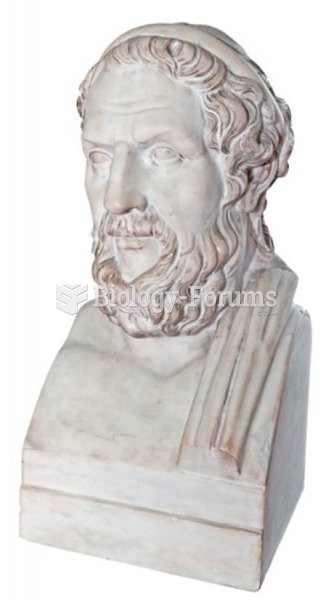|
|
|
Nearly all drugs pass into human breast milk. How often a drug is taken influences the amount of drug that will pass into the milk. Medications taken 30 to 60 minutes before breastfeeding are likely to be at peak blood levels when the baby is nursing.
Inotropic therapy does not have a role in the treatment of most heart failure patients. These drugs can make patients feel and function better but usually do not lengthen the predicted length of their lives.
Every 10 seconds, a person in the United States goes to the emergency room complaining of head pain. About 1.2 million visits are for acute migraine attacks.
Although the Roman numeral for the number 4 has always been taught to have been "IV," according to historians, the ancient Romans probably used "IIII" most of the time. This is partially backed up by the fact that early grandfather clocks displayed IIII for the number 4 instead of IV. Early clockmakers apparently thought that the IIII balanced out the VIII (used for the number 8) on the clock face and that it just looked better.
Oliver Wendell Holmes is credited with introducing the words "anesthesia" and "anesthetic" into the English language in 1846.
 Homer: In the Western classical tradition Homer is the author of the Iliad and the Odyssey, and is ...
Homer: In the Western classical tradition Homer is the author of the Iliad and the Odyssey, and is ...
 Among non-Muslims in the United States, wearing a head scarf, or a khimar, is a personal fashion ...
Among non-Muslims in the United States, wearing a head scarf, or a khimar, is a personal fashion ...
 This PCM on a Chrysler vehicle can only be seen by hoisting the vehicle because it is located next ...
This PCM on a Chrysler vehicle can only be seen by hoisting the vehicle because it is located next ...




